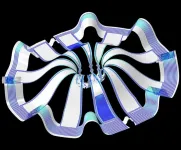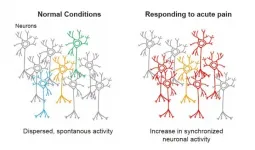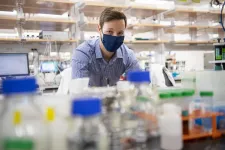(Press-News.org) ROCHESTER, Minn. -- Low representation of minority groups in public genomic databases may affect therapy selection for Black patients with cancer, according to new Mayo Clinic research published in npj Precision Oncology.
The researchers investigated the use of genomic databases and found that tumor mutation burden was significantly inflated in Black patients compared to White patients.
As a result of the study, clinicians who are using public genomic databases need to be aware of the potential for inflated tumor mutation burden values and how that may affect therapy selection and outcomes, especially for patients from underrepresented groups.
Clinicians use biomarkers, which are indicators of a disease or condition, to determine whether patients might benefit from immunotherapy, a type of treatment used to treat cancer. One of those biomarkers is tumor mutation burden, the number of mutations within a tumor compared to normal cells. Most of the time that tumor mutation burden is calculated, normal cells are not used, and genomic databases of mutations or algorithms are used to filter results.
The research team collected data from 701 patients who were newly diagnosed with multiple myeloma, including 575 self-reported White patients and 126 self-reported Black patients. The team analyzed DNA from patients' tumor cells and healthy cells to determine the differences. The team paired tumor and germline exome sequencing data to analyze differences between the two sources of DNA. Then they used public databases to filter mutation variants from the tumor sequencing data.
"Currently, the FDA has approved a threshold of more than 10 mutations per megabase of DNA to select patients to receive immunotherapy," says Yan Asmann., Ph.D., a Mayo Clinic bioinformatician and first author of the study.
Immunotherapy with immune checkpoint inhibitors (a type of drug that blocks proteins called checkpoints) helps the body recognize and attack cancer cells and has dramatically improved patient survival with many types of cancer. However, since the autoimmune toxicities with these inhibitors can be severe, it is critical to have an accurate tumor mutational burden as a biomarker to improve the ability to predict the optimal treatment for patients. Tumor mutation burden is determined by counting the number of changes in the DNA of a patient's tumor.
"Determining tumor mutation burden becomes difficult when you do not have DNA from a patient's normal cells," says Aaron Mansfield, M.D., a Mayo Clinic medical oncologist and corresponding author of the paper. "For this reason, reference genomes are used for comparisons to tumors to estimate the burden."
Based on Dr. Mansfield's experiences with patients, he was concerned that this type of approach to determining tumor mutation burden was inaccurate, especially in patients with ancestral backgrounds that are not well-represented in the reference genome databases.
"At the level of an individual patient, our findings suggest that when we sequence tumors, it is also important to sequence paired normal tissues to accurately identify differences," says Dr. Mansfield. "At the level of the research community, we need to continue to improve the representation of patients with diverse ancestral backgrounds in reference genome databases."
According to Dr. Mansfield, accurate tumor mutational burden is particularly important in cancers currently treated with immune checkpoint inhibitors, including breast, bladder, cervical, colon, head and neck, liver, lung, renal cell, stomach and rectal cancers, as well as Hodgkin lymphoma, melanoma and any other solid tumor that is not able to repair errors during DNA replication.
"It needs to be recognized that we performed this proof-of-principle study in patients with multiple myeloma. However, the findings of racially disparate tumor mutation burden inflation might be generalizable to all cancer types," says Dr. Mansfield.
The lack of representation of diverse backgrounds in genomic research is well-known. Of more than 60,000 people genotyped and sequenced, only 8.6% are of African ancestry, while 54.9% are of non-Finnish European ancestry.
"Many investigators around the world are looking at ways to improve the ability to select patients to receive immunotherapy," says Dr. Mansfield. "We have identified a problem with one approach and have recommended a solution for it."
INFORMATION:
Funding for this research was provided by the National Cancer Institute and Mayo Clinic Center for Individualized Medicine.
Dr. Mansfield reports research support from Novartis AG and Verily; remuneration to his institution for participation on advisory boards for AbbVie Inc., Astra Zeneca, Bristol-Myers Squibb Co., Genentech Inc. and Janssen Pharmaceuticals Inc.; travel support from F. Hoffmann-La Roche Ltd.; and he is a nonremunerated director of the Mesothelioma Applied Research Foundation.
About Mayo Clinic
Mayo Clinic is a nonprofit organization committed to innovation in clinical practice, education and research, and providing compassion, expertise and answers to everyone who needs healing. Visit the Mayo Clinic News Network for additional Mayo Clinic news.
Media contact:
Colette Gallagher, Mayo Clinic Public Affairs, newsbureau@mayo.edu
BOSTON - Researchers have used a genetic engineering strategy to dramatically reduce levels of tau--a key protein that accumulates and becomes tangled in the brain during the development of Alzheimer's disease--in an animal model of the condition. The results, which come from investigators at Massachusetts General Hospital (MGH) and Sangamo Therapeutics Inc., could lead to a potentially promising treatment for patients with this devastating illness.
As described in Science Advances, the strategy involves a gene regulation technology called zinc finger protein transcription ...
A team of scientists, led by researchers at Northwestern University, Shirley Ryan AbilityLab and the University of Illinois at Chicago (UIC), has developed novel technology promising to increase understanding of how brains develop, and offer answers on repairing brains in the wake of neurotrauma and neurodegenerative diseases.
Their research is the first to combine the most sophisticated 3-D bioelectronic systems with highly advanced 3-D human neural cultures. The goal is to enable precise studies of how human brain circuits develop and repair themselves in vitro. The study is the cover story for ...
In a world first, a cross-institutional research collaboration has used a two-photon microscope (*1) with a combination of calcium imaging (*2) and holographic stimulation (*3) to reveal that the functional connectivity between neurons located in the primary somatosensory cortex is increased in response to acute pain.
Pain occurs as a result of injury, such as peripheral neuron damage or inflammation stemming from peripheral tissue violation. Research findings have been published on the involvement of central nervous system abnormalities in the onset of pain and sustained pain. The primary somatosensory cortex ...
COLUMBUS, Ohio - Most stroke victims don't receive treatment fast enough to prevent brain damage. Scientists at The Ohio State University Wexner Medical Center, College of Engineering and College of Medicine have developed technology to "retrain" cells to help repair damaged brain tissue. It's an advancement that may someday help patients regain speech, cognition and motor function, even when administered days after an ischemic stroke.
Engineering and medical researchers use a process created by Ohio State called tissue nanotransfection (TNT) to introduce genetic material into cells. This allows them to reprogram skin cells to become something ...
New York, NY--March 19, 2020--Columbia Engineering researchers, working with Brookhaven National Laboratory, report today that they have built designed nanoparticle-based 3D materials that can withstand a vacuum, high temperatures, high pressure, and high radiation. This new fabrication process results in robust and fully engineered nanoscale frameworks that not only can accommodate a variety of functional nanoparticle types but also can be quickly processed with conventional nanofabrication methods.
"These self-assembled nanoparticles-based materials are so resilient that they could fly in space," says Oleg Gang, professor ...
PITTSBURGH, March 19, 2021 - Non-circulating memory T cells, whose main function is to provide local protection against re-infection, contribute to chronic transplant rejection, University of Pittsburgh School of Medicine researchers reveal in a paper published today in Science Immunology.
The scientists show that these "tissue-resident memory T cells" are harmful in situations where antigens that the cells recognize are present in the body for a long time, such as in cases of an organ or tissue transplant. This finding is an important step toward improving therapies to help prevent organ rejection in transplant recipients.
"Tissue-resident memory T cells serve an important surveillance function," said co-senior author Martin Oberbarnscheidt, ...
CAMBRIDGE, MA -- Many viruses infect their hosts through mucosal surfaces such as the lining of the respiratory tract. MIT researchers have now developed a vaccination strategy that can create an army of T cells that are ready and waiting at those surfaces, offering a quicker response to viral invaders.
The researchers showed that they could induce a strong memory T cell response in the lungs of mice by giving them a vaccine modified to bind to a protein naturally present in mucus. This can help ferry the vaccine across mucosal barriers, such as the lining of the lungs.
"In this paper, we specifically focused on T cell responses that would be useful against viruses or cancer, and our idea was to use this protein, albumin, as sort of a Trojan horse to ...
To understand the fundamental properties of an industrial solvent, chemists with the University of Cincinnati turned to a supercomputer.
UC chemistry professor and department head Thomas Beck and UC graduate student Andrew Eisenhart ran quantum simulations to understand glycerol carbonate, a compound used in biodiesel and as a common solvent.
They found that the simulation provided detail about hydrogen bonding in determining the structural and dynamic properties of the liquid that was missing from classical models. The study was published in the Journal of Physical Chemistry B.
Glycerol carbonate could be a more environmentally ...
During a public health crisis like the COVID-19 pandemic, U.S. hospitals need to allocate scarce medical resources in an equitable manner, according to clinicians and ethicists at the University of Miami Miller School of Medicine.
"Significant concerns have been raised that crisis standards of care may be biased against certain patients based on race or ethnicity," said Hayley Gershengorn, M.D., associate professor of pulmonary and critical care medicine. "To examine that issue, we analyzed over a thousand medical records from two academic hospitals where University of Miami faculty see patients and found no disparities ...
In-school COVID-19 transmission is rare - even among close school contacts of those who test positive for the virus - when schools heed public health precautions such as mandatory masking, social distancing and frequent hand-washing, according to results of a pilot study in Missouri aimed at identifying ways to keep elementary and secondary schools open and safe during the pandemic. A close contact is anyone who has been within 6 feet for more than 15 minutes in a 24-hour period with someone infected with COVID-19.
The study is part of a larger, ongoing collaboration involving the Centers for Disease Control and Prevention (CDC), Washington University School of Medicine in St. Louis, ...




